I have created Term Document matrix from a corpus:
x <- TermDocumentMatrix (corpus )
Then I created a matrix:
Matrix <- as.matrix ( x )
Matrix [ Matrix >=1 ] <- 1
Matrix <- tcrossprod ( Matrix )
As an output: `
Terms
Terms best love fun don’t games
best 31 0 1 2 0
love 0 48 1 2 6
fun 1 1 39 1 1
dont 2 2 1 46 7
games 0 6 1 7 54
Then I created a graph:
G <- graph.adjacency(Matrix, mode = "directed", weighted = TRUE)
Then used the STR function to check the graph object structure and the result are as follows:
Str(G)
IGRAPH DNW- 25 452 --
+ attr: name (v/c), weight (e/n)
+ edges (vertex names):
1 -> 3, 4, 6, 7, 8, 11, 14, 15, 20, 21, 23, 24
2 -> 3, 4, 5, 6, 7, 8, 9, 11, 12, 13, 14, 15, 16, 17, 19, 20, 21, 22, 24, 25
3 -> 1, 2, 4, 5, 6, 7, 8, 9, 11, 12, 13, 14, 15, 16, 17, 18, 19, 22, 24, 25
4 -> 1, 2, 3, 5, 6, 7, 8, 9, 10, 11, 12, 13, 15, 16, 17, 18, 19, 21,
5 -> 2, 3, 4, 7, 8, 9, 10, 11, 12, 13, 14, 17, 18, 20, 21, 22, 23, 24, 25
The problem is the “+ edges (vertex names)”. What I want is results below from a graph that I created for a different problem.
IGRAPH DNW- 20 31 --
+ attr: name (v/c), weight (e/n)
+ edges (vertex names):
[1] 1 ->2 1 ->3 1 ->5 2 ->4
[5] 2 ->5 3 ->6 3 ->9 4 ->8
[9] 5 ->7 5 ->20 6 ->9 7 ->8
[13] 7 ->9 8 ->9 9 ->10 10->11
[17] 10->15 20->1 11->12 11->13
